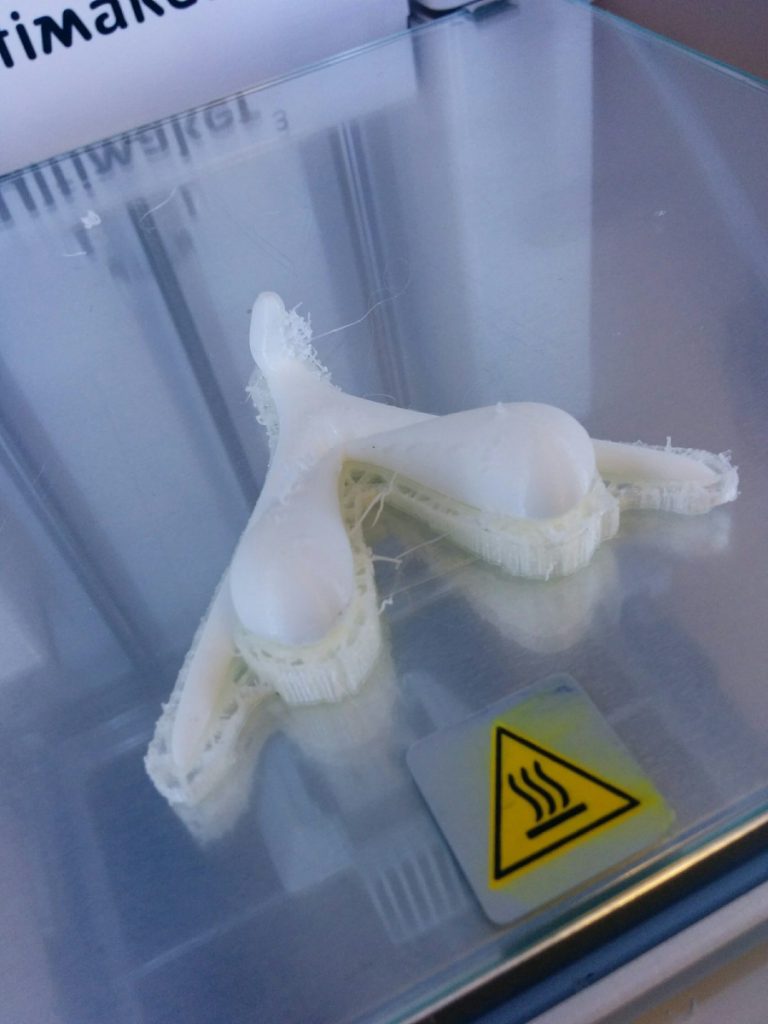All Clitoris Are Beautiful (but some are more anatomically correct than others)
Did you know that it was only in 2015 that the first 3D clitoris model was created? It was made by an artist and birth doula named Amy Stenzel (now Amy Bravewater) in the context of the vulvacademy project.
During the same period, a French researcher, Odile Fillod, dedicated one full year of free labour to research everything ever published about the clitoris, from it’s greek ethymology to century’s old anatomy books. With the support of a facilitator at the Carrefour Numérique de la cité des sciences in Paris, she created a first version of the anatomically correct clitoris.
This new model received worlwide media attention, which underlined the overwhelming need for better material for sexuality education.
Following the publication of new data about the clitoris from a Geneva team, Filliod worked with Philippe Cosentino to develop a second, more anatomically accurate, version of the clitoris at the end of 2016.
In Geneva, a team of scientists from Unige and HUG, with Dr Jasmine Abdulcadir and Celine Brockman started doing MRIs of patients and tracing their clitoris. In 2020, they published their data which allowed us to see for the first time what the clitoris of a live female looked like. Four real models, 3 intact and one cut (the team also works with patients with Female genital cutting), and 2 stylized models (intact and cut) came out of this study. ( “In Vivo Imaging-Based 3-Dimensional Pelvic Prototype Models to Improve Education Regarding Sexual Anatomy and Physiology“, by authors Jasmine Abdulcadir, MD, PD,1 Romain Dewaele, MSc,2 Natacha Firmenich, MD,3 Jorge Remuinan, RT,3 Patrick Petignat, MD,1 Diomidis Botsikas, MD, PD,3 and Céline Brockmann, PhD2)
Later on, in Australia, researchers used the data collected by urologist Hellen OConnell to create another model that is available for 3D printing but can also be bought in a soft version via the Anatomical education project created by late Dr Ea Mulligan and Suzanne Belton.
Lately, a MIT post doctoral student, Shaniel Bowen, successfully MRIed nearly 200 patient’s clitorises and came up with new data. She hasn’t published it all yet but it’s happening!
Which one should you print?
Clitoris anatomy is something that is still relatively unknown and has been chronically underfounded which means there hasn’t been a lot of data to build the science on. It is ungoing science, and that is why it is so fascinating to document. Each team came up with their own way of measuring, scanning and tracing and produced models that have their pro and cons. This is live science and it is up to the persons involved, and trained in the matter to have the scientific debates necessary to determine the best measuring techniques and how to move forward with the data currently available and which new data should be added.
If you have relevant knowledge, be part of the discussion.
If you use clitoris models, read the papers and understand the how and the why.
If you care about anatomy and sexual health, advocate for funding and research because it is about bloody time we document an organ that is so important.
And in any case, credit the researchers, cheer up on them because they worked tirelessly, sometimes using their own time and ressources to create those models and make them available for free. Which is what science should be. Free and accessible to all.
Print your own clitoris
Get the 3D files
- Clitoris by Amy Stenzel ( Download File)
- Clitoris V1 – Odile Fillod et le Carrefour Numérique ( Download File)
- Clitoris V2- Odile Fillod et Philippe Cosentino ( Download File)
- Geneva – Clitoris intact MRI-1 ( Download File)
- Geneva – Clitoris intact MRI-2 ( Download File)
- Geneva – Clitoris intact MRI-3 ( Download File)
- Geneva – Clitoris cut MRI-1 ( Download File)
- Geneva – Modélization of a cut clitoris ( Download File)
- Geneva – Modélization of an intact clitoris ( Download File)
- Clitoris by the Australian team ( Download File)
How to 3D print a clitoris? It’s (relatively) easy, here is how:
- Download the file that interests you.
- Download software that allows you to read the file. Two free applications are Tinkerine and Cura by Ultimaker. There are others.
- Open the .stl file in the downloaded application.
- Find a 3D printer . It is becoming easier to access a 3D printer. They are often available in educational institutions, librairies, fablabs, cafés… With a bit of research, you’ll find one nearby.
- Once you have found the printer, export your gcode file from your USB key or SD card into the 3D printer. You’ll then pass the next hour marvelling at digital technology.
- Troubleshooting? Intimidated by all this? The facilitators who are around 3D printers are usually super helpfull and glad to help people get more autonomous with technologies. Ask for help!
- Contribute, share, spread the knowledge:
- use and distribute copyleft content;
- credit the makers and scientists who do the work and make it available;
- develop your own tools.


Comments are closed.